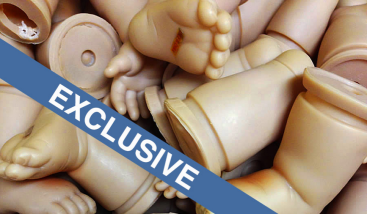After the end of each day’s business, an inconspicuous unmarked van pulls up to the back of the neighborhood abortion clinic. Carrying an orange plastic cooler, the driver enters through an unlocked back door and exits moments later, cooler full. Inside the ice chest are opaque, heavy-duty sealed plastic bags.
One bag contains the relatively intact body of a mid-term human fetus. The mother’s general health and statistics are noted on the bag along with the baby’s blood type. Several other bags hold the bloody slurry of early term abortion remains; some contain various body parts — brains, livers, kidneys, eyes, umbilical cords — and others have a random mix of tissue, detached limbs and heads.
These details are obtained from a physician who operated a late term abortion clinic in Maryland. I approached him in 2009 as a journalist doing an article on the life sciences industry. He was in the process of selling out to another doctor and leaving the abortion center. While he asked me not to use his name in my report, he was very forthcoming about the process for fetal tissue harvesting and transport. He made clear that what is described above is business as usual in the fetal body parts industry in America. Many a child is slaughtered in the womb and then rendered, packaged and brokered to a multitude of industries, whose products and projects comprise the aftermarket for the roughly 1.2 million U.S. abortions annually.
Big Business
It’s big business and getting bigger. To all indications it operates relatively free of regulatory oversight, and this not from a lack of scandal: Not long after I interviewed the unnamed doctor above, Dr. Leroy Carhart took over the clinics, and in 2013 a woman died from a 33-week abortion in the clinic described above.
Source: Linda Royall, https://stream.org
 Listen Online
Listen Online Watch Online
Watch Online Find a Station in Your Area
Find a Station in Your Area










 Listen Now
Listen Now Watch Online
Watch Online
